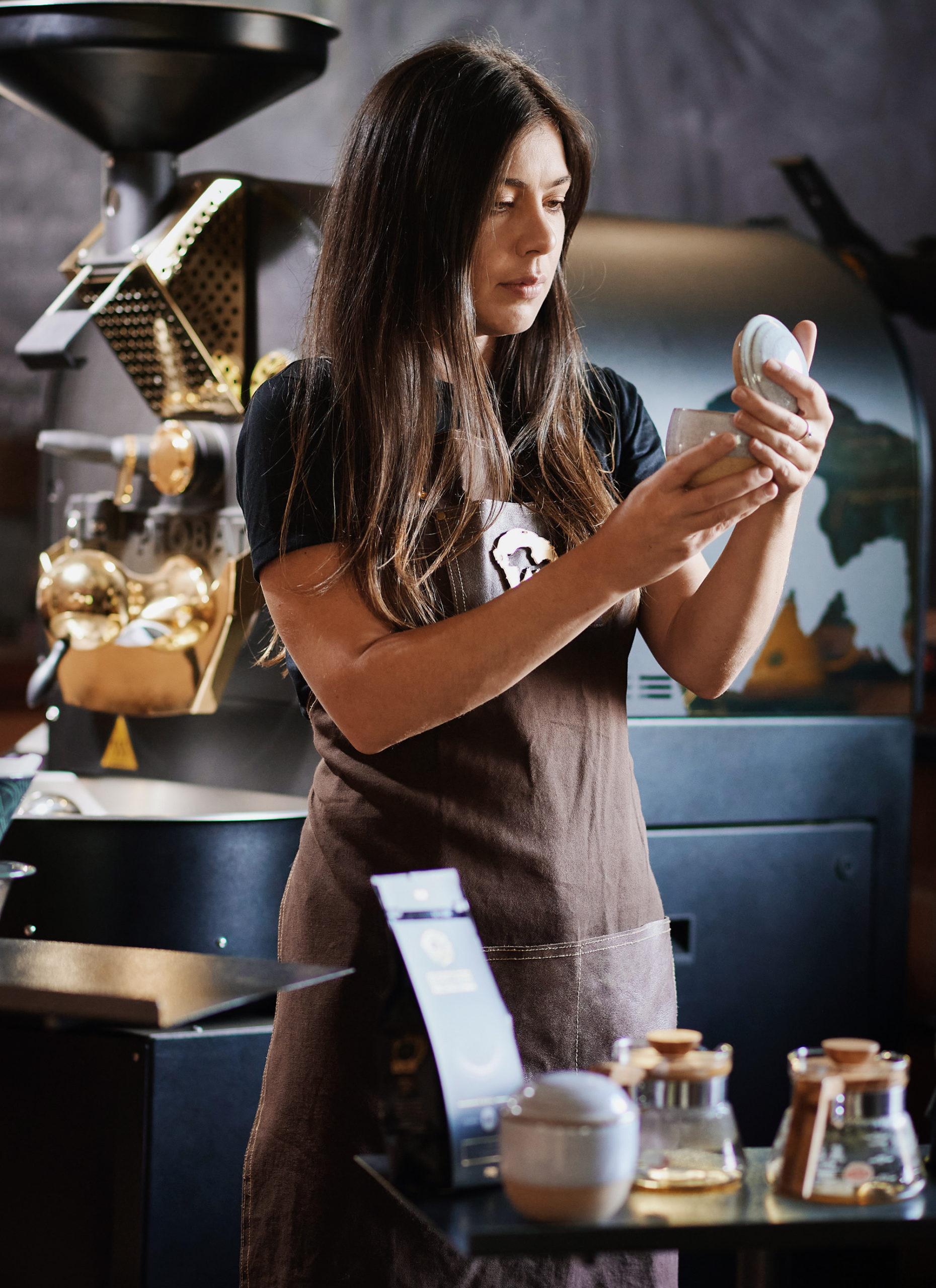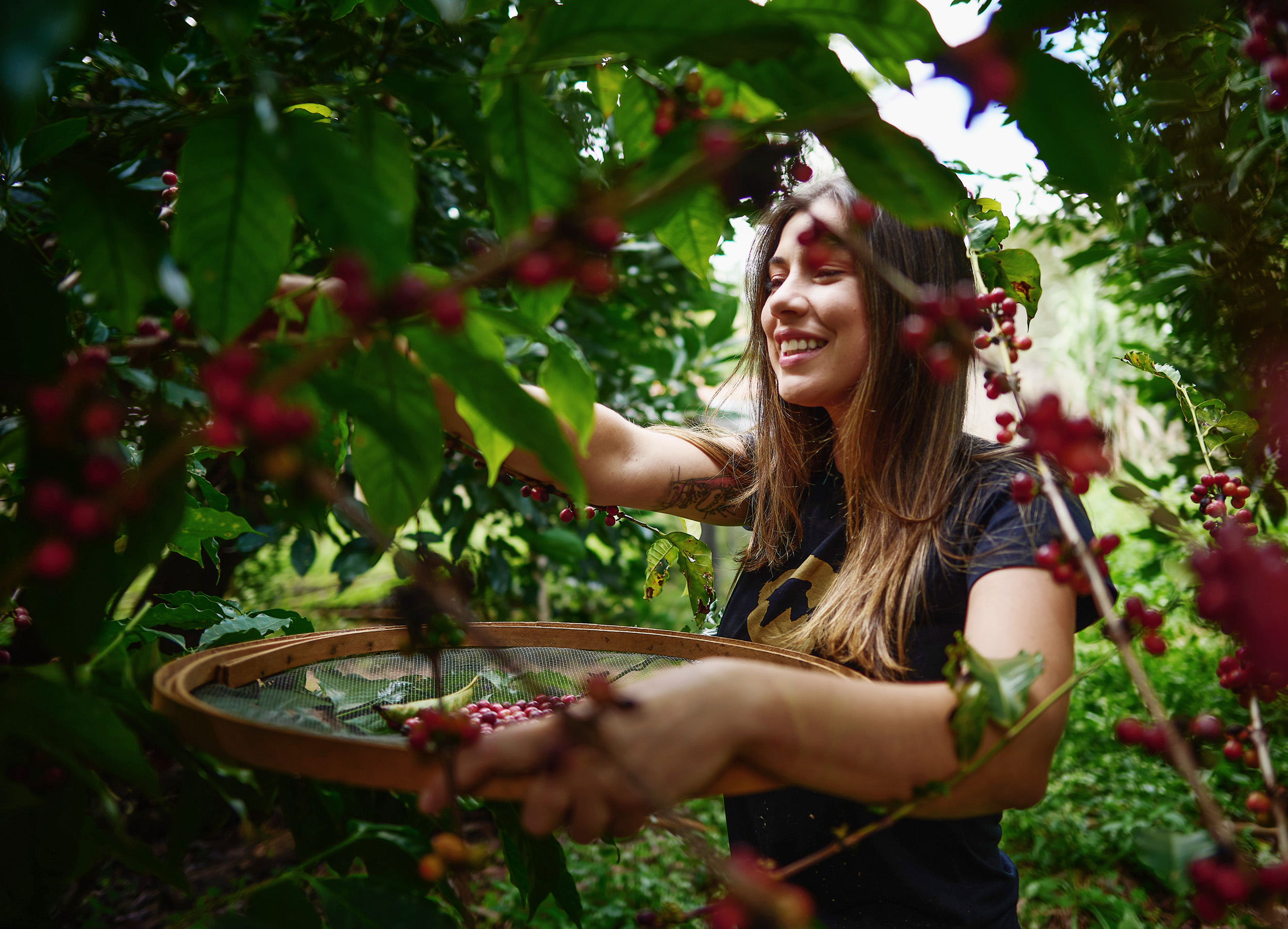 Martha Grill at Minamihara’s onsite roasting facility
Martha Grill at Minamihara’s onsite roasting facility
Since joining Minamihara, Martha has spent a lot more time roasting and working with green coffee. We asked her for her thoughts about how roasters and green buyers can best explore what Brazilian coffee has to offer and what they can do to develop good relationships with producers.
For coffee buyers and roasters, Martha again emphasises the importance of not holding fixed expectations of how a Brazilian coffee should taste and how it behaves in the roaster. ‘The fact that part of the world still sees Brazil as one big espresso-blend-base producer is a shame,’ she says. ’Coffee roasters should start looking for a different flavour profile than what they conceive as “Brazil”.’ With so many different producing regions in Brazil and a wide range of species, varieties, and processes available, there are many different flavour profiles waiting to be discovered. ‘I can’t stop being surprised by the quality, consistency, and different sensory profiles that I taste day by day,’ she says.
‘In my opinion it’s simplistic to talk about “Brazilian coffee” as if it’s just one nutty, low-density, full-bodied thing,’ Martha says. ‘For example, [at Minamihara] we produce shaded coffees, we dry our coffees on African beds inside a greenhouse, we produce only naturals and the dried cherries rest in their husks for at least three months before roasting. These coffees are surprisingly dense and could easily be mistaken for an Ethiopian coffee during the roast as well as on the cupping table.’
 Martha Grill handpicking her coffee
Martha Grill handpicking her coffee
Roasters in other countries often miss some of the possibilities inherent in Brazilian coffee, Martha suggests. ‘Even though most of the best [green] coffees are still exported, in my opinion the best place to try Brazilian coffees is over here … I suspect it’s because roasters around the globe try to find classic characteristics in Brazilian coffees, instead of allowing themselves to be surprised … while the Brazilian roasters investigate all the potential hidden inside those beans,’ she says.